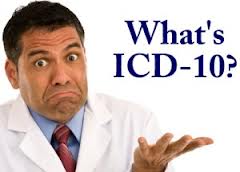Chart Smarter: Why One EMS Agency Ditched Paper for Mobile Tech
The Major Differences Between ICD-9 & ICD-10
The impending change from ICD-9 to ICD-10 will be the largest and most challenging transition of our careers
Was this information valuable?

The impending change from ICD-9 to ICD-10 will be the largest and most challenging transition of our careers. When it comes to ICD-10, a good plan is important to your success. Have you formulated a plan yet? If not, don’t panic but be prepared to roll up your sleeves and get busy!
You may be wondering why it’s important to start preparing 13 months in advance. There are many steps in the preparation so the more time you allow, the better the result will be. Think of the preparation as dress rehearsal for the live show. The more rehearsal time you have, the better the live show will be. The same applies here because the financial health and very survival of your business depends on a flawless live show.
Let’s start with understanding what the major differences between ICD-9 and ICD-10 and how this will affect your daily operations during and after the transition.
ICD-9 Codes: ICD-10 Codes:
14,000 Diagnosis Codes 70,000 Diagnosis Codes
3-5 Characters in Length 3-7 Characters in Length
Digit 1 may be Alpha or Numeric Digit 1 is Alpha
Digits 2-5 are Numeric Digits 2-3 are Numeric
Lacks Laterality Allows Laterality and Bilaterality
This transition will have significant challenges and will be the largest transition the healthcare community has ever undertaken. This will impact all areas of operation: billing processes, clinical documentation, workflow structures, quality reporting, revenue cycle and employee retention.
Preparation for this transition can help mitigate the impact. There will be a learning curve with this transition so adequate training, patience and encouragement is paramount. You can expect cash flow interruptions, an increase in denials, a significant decrease in productivity and employee burnout.
EMS Providers should begin preparing for strategies to accommodate decreases in billing staff productivity during coder training and in the months following the implementation date.
Completion of clinical documentation may result in decreased productivity and increased frustration as clinicians modify their documentation practices to accommodate the increased specificity required with ICD-10.
Not only will EMS Providers be impacted by this transition, Payers and Clearinghouses will also have to make significant adjustments. System updates will be required to handle longer code sets and dual coding sets.
Every National Coverage Determination (NCD), Local Coverage Determination (LCD) and payer policy that is tied to medical necessity will have to be revised, thereby creating new payment rules and coverage determinations. Your company will need to identify and adapt to these new policies and prepare for an increase in denials, appeals and underpayments.
What can you do to get ready? Preparation is important in making a successful transition from ICD-9 to ICD-10. There are steps your organization should begin taking as soon as possible to lessen the impact of the transition. These steps will be outlined in further detail in a future blog post.
Remember, when it comes to ICD-10 preparations, your organization is either preparing to success by taking proactive steps or preparing to fail by doing nothing.
Related Posts
The End of Delayed Documentation
News Alert: New ePCR Integration Simplifies EMS Data Management and Enables Better Care Coordination
ZOLL Pulse Blog
Subscribe to our blog and receive quality content that makes your job as an EMS & fire, hospital, or AR professional easier.
ZOLL Pulse Blog
Subscribe to our blog and receive quality content that makes your job as an EMS, fire, hospital, or AR professional easier.




